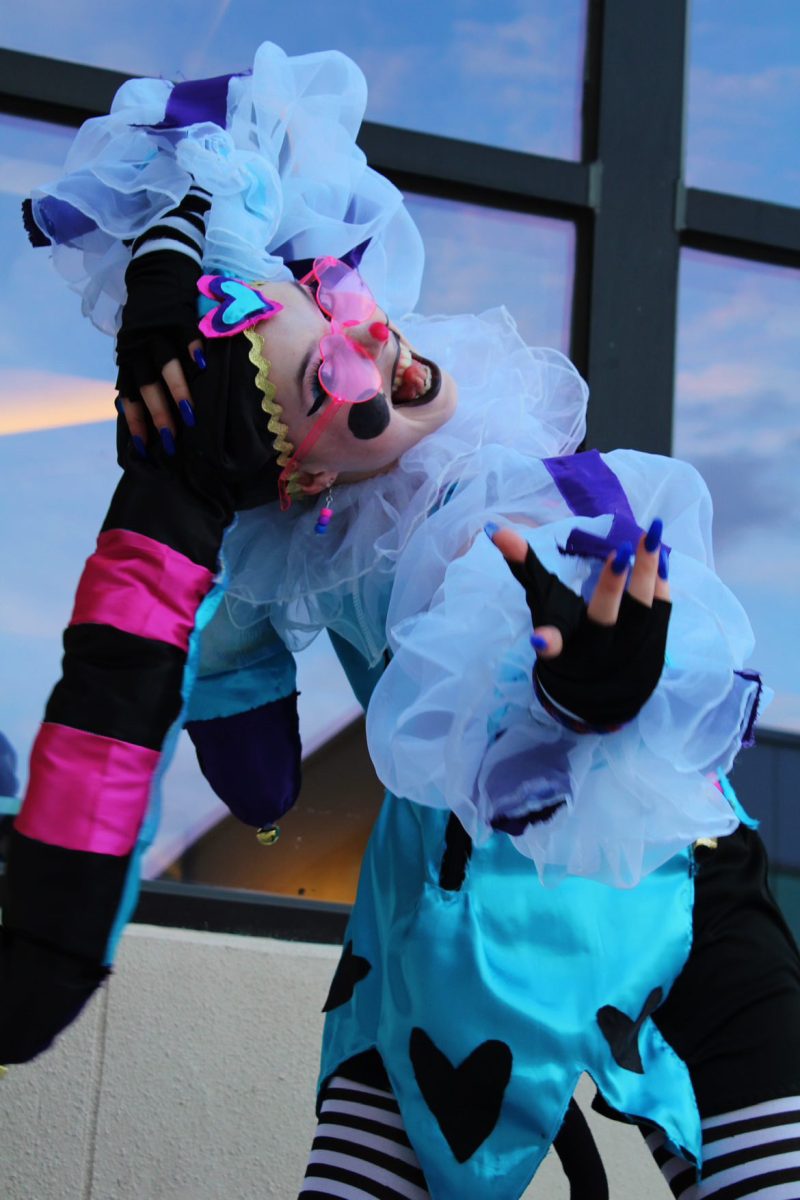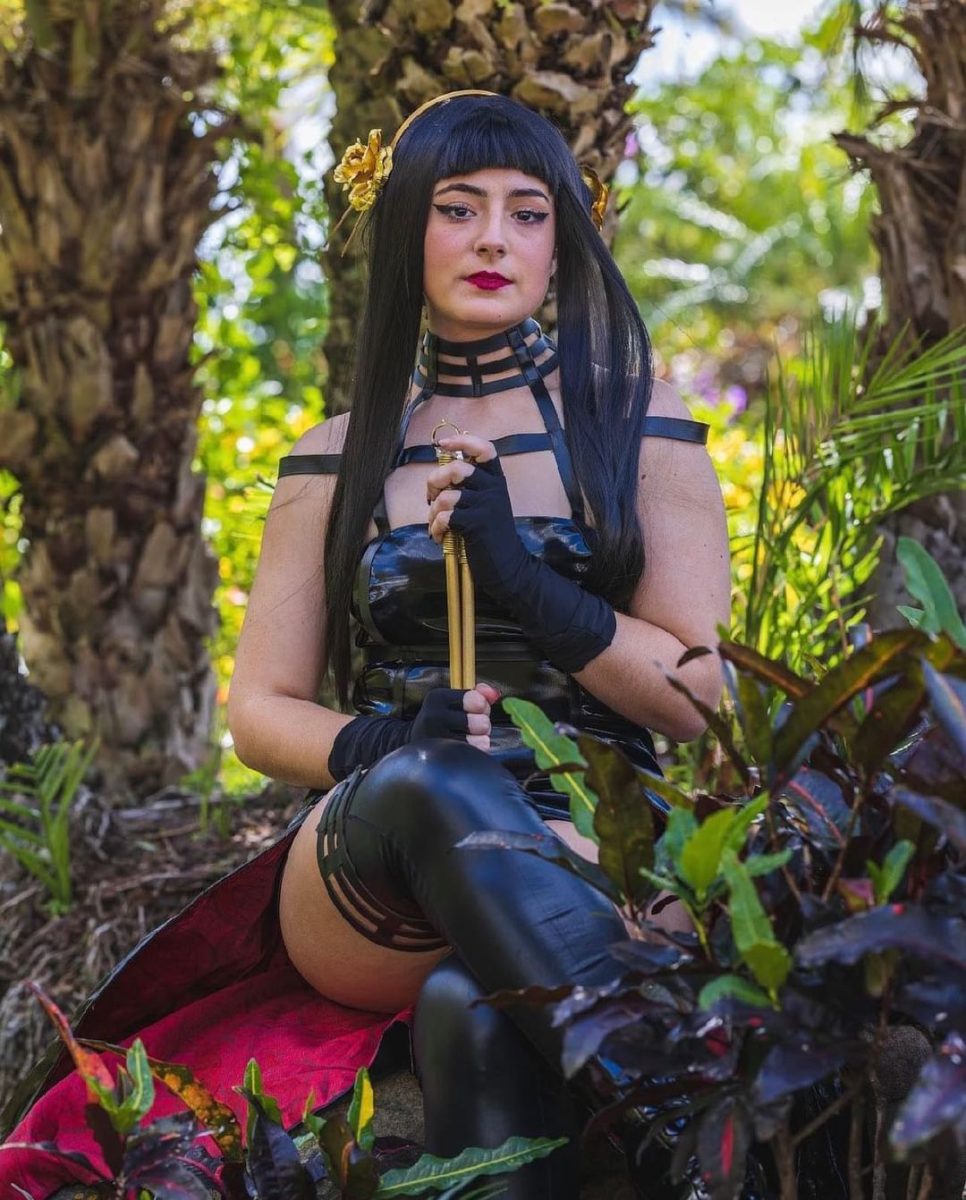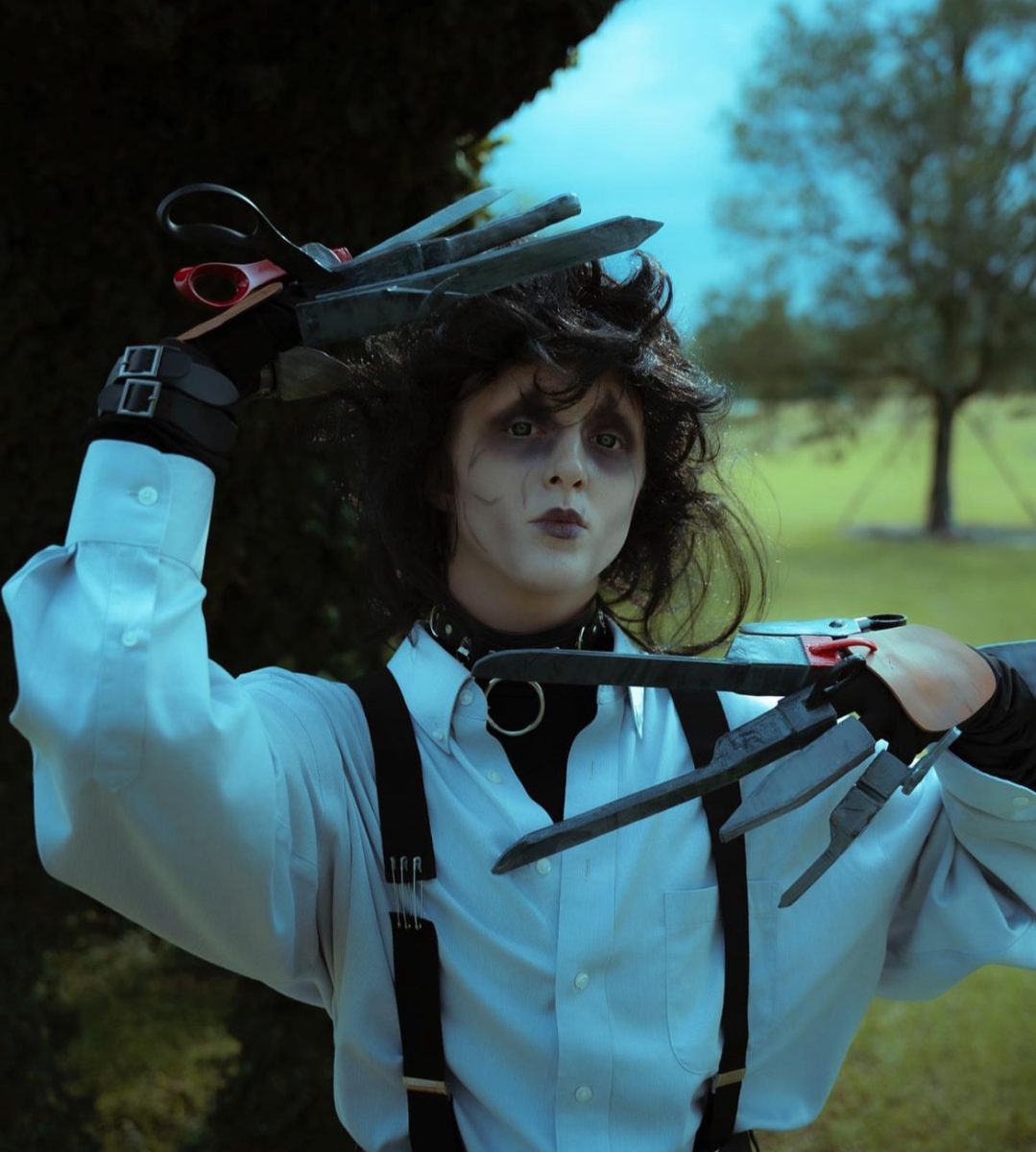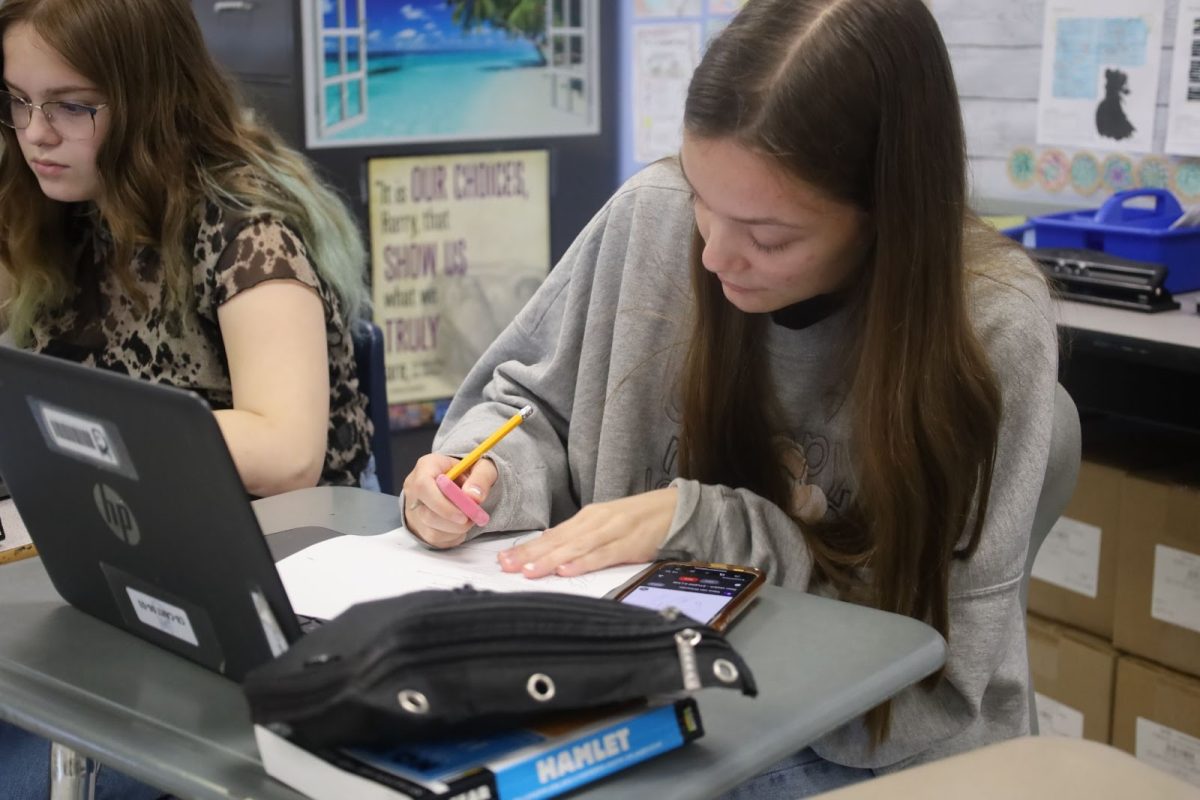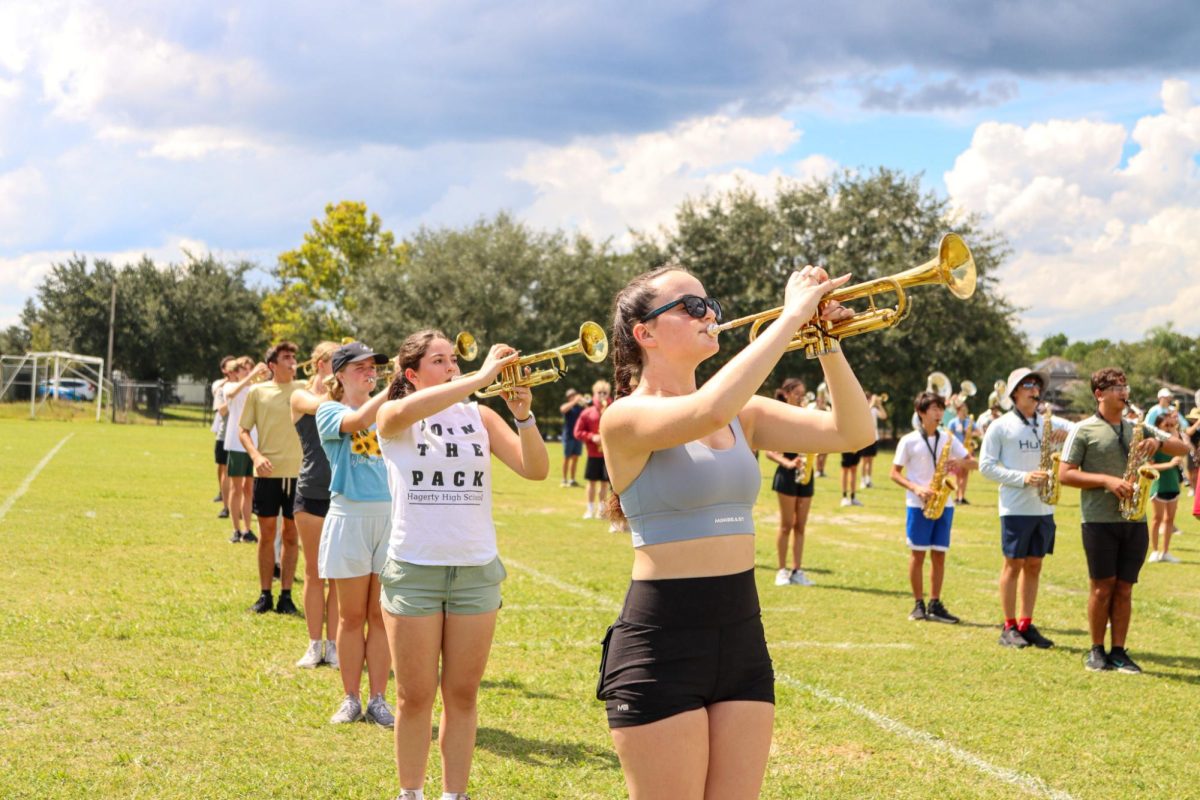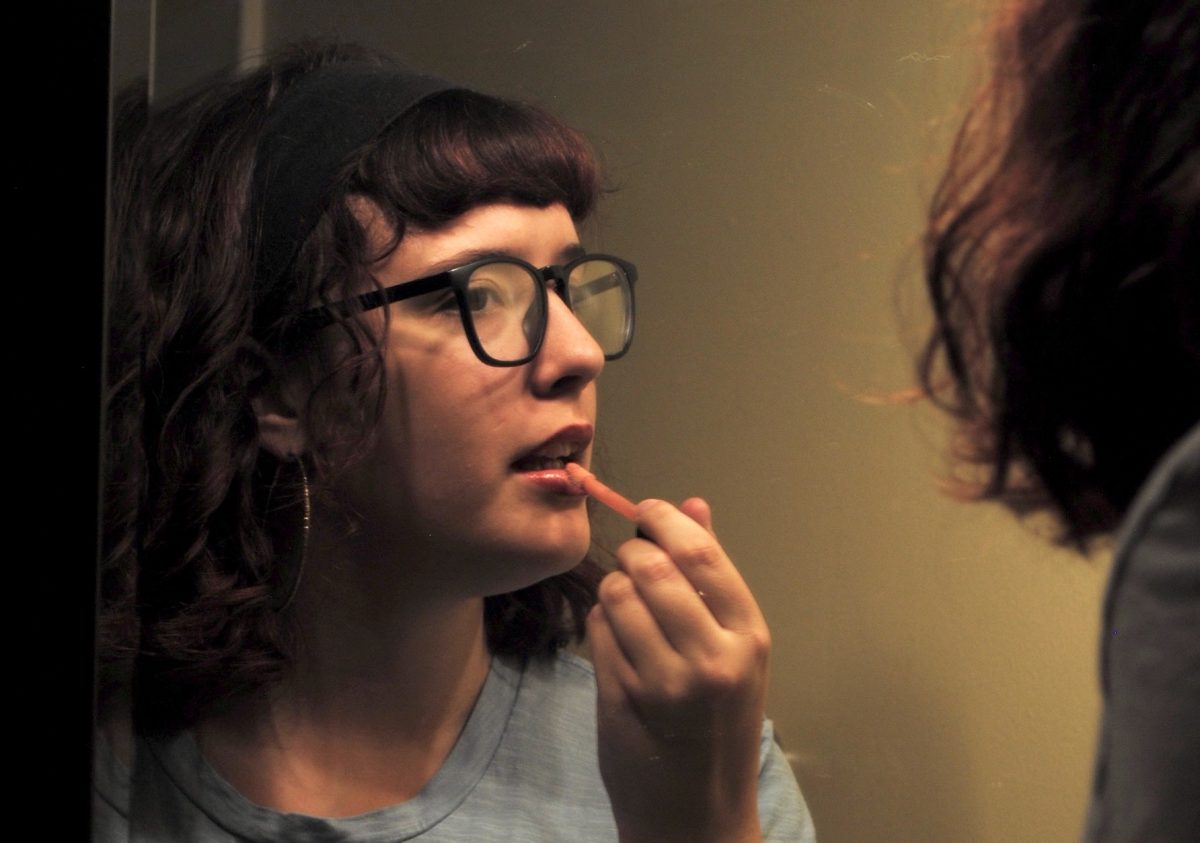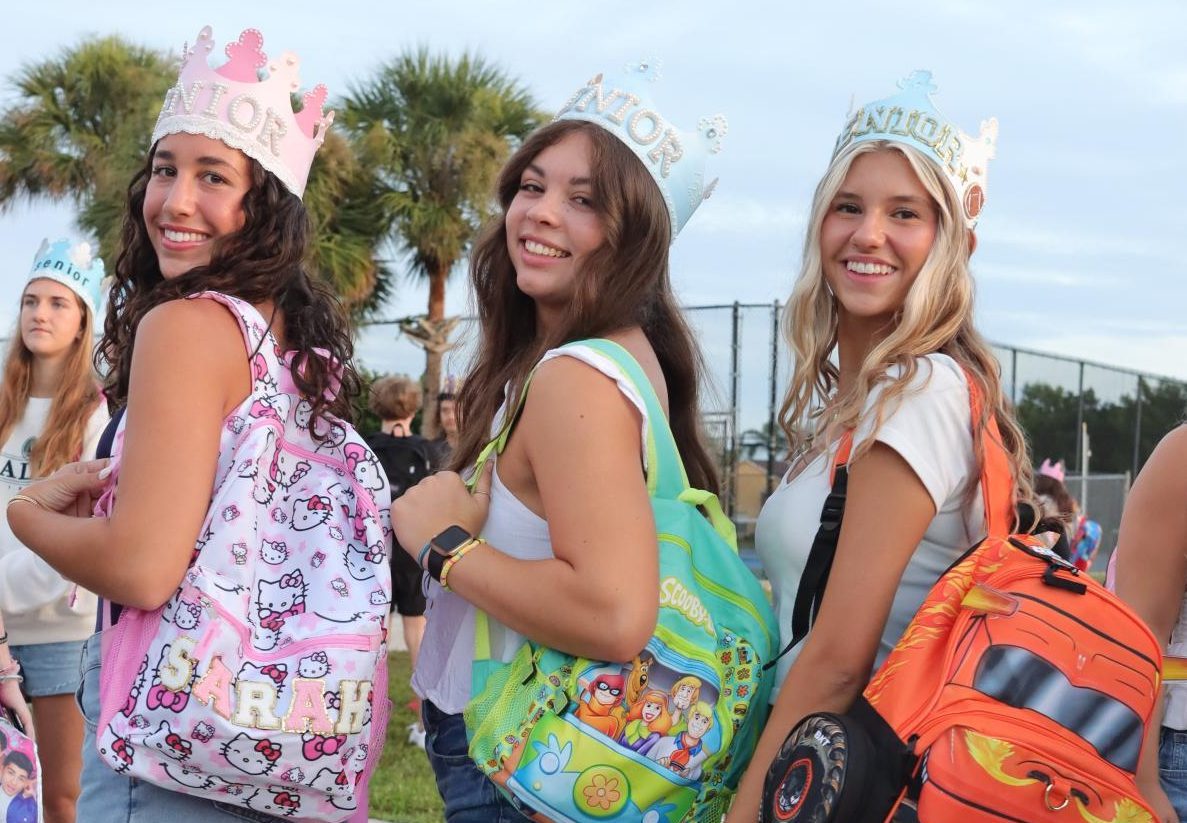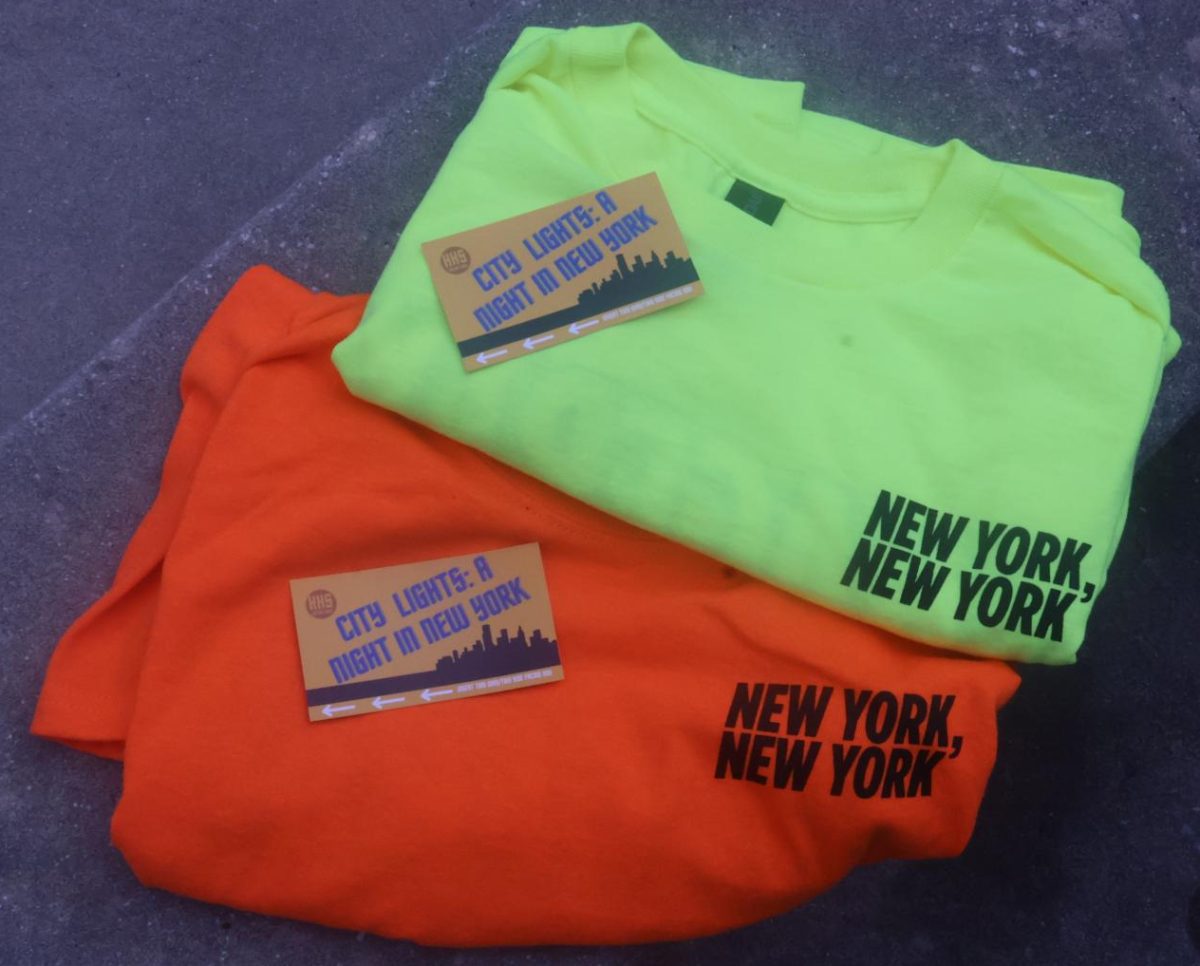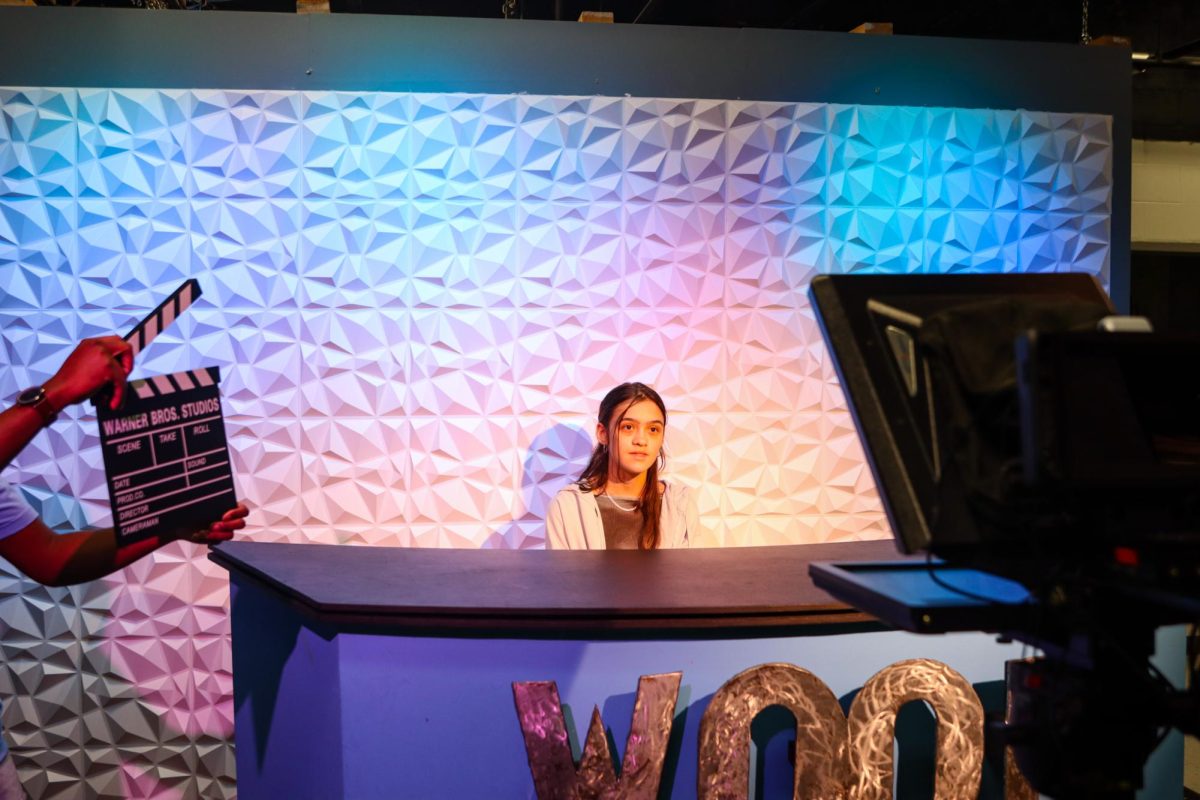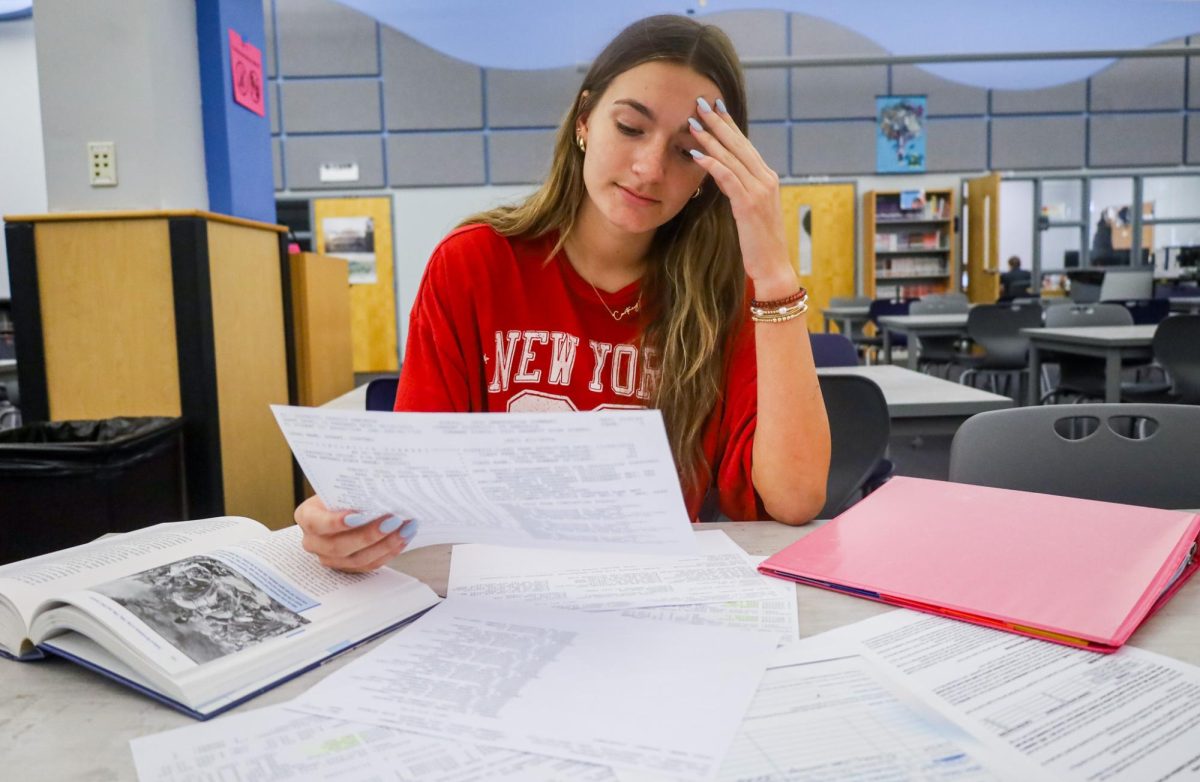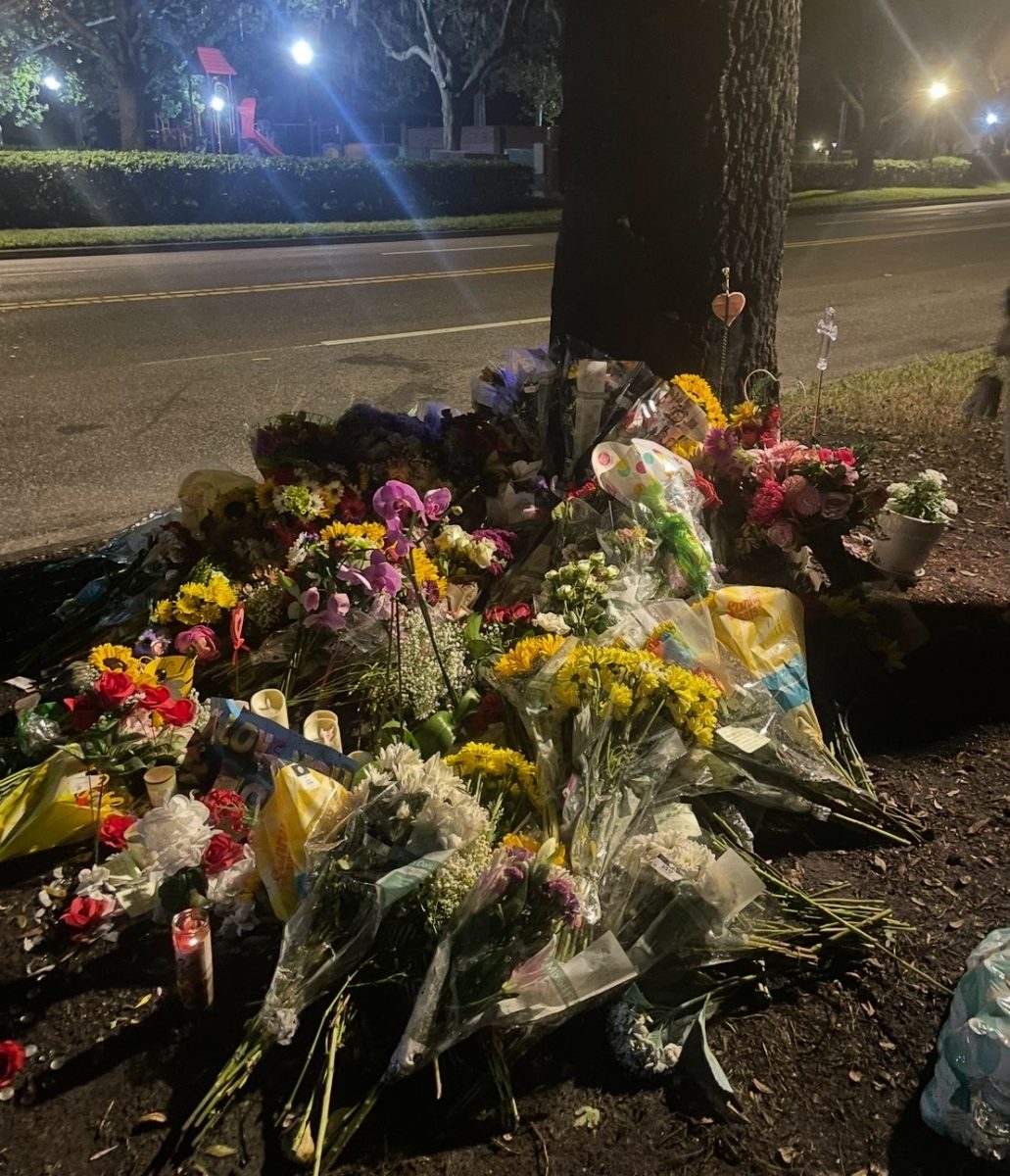Choose your character
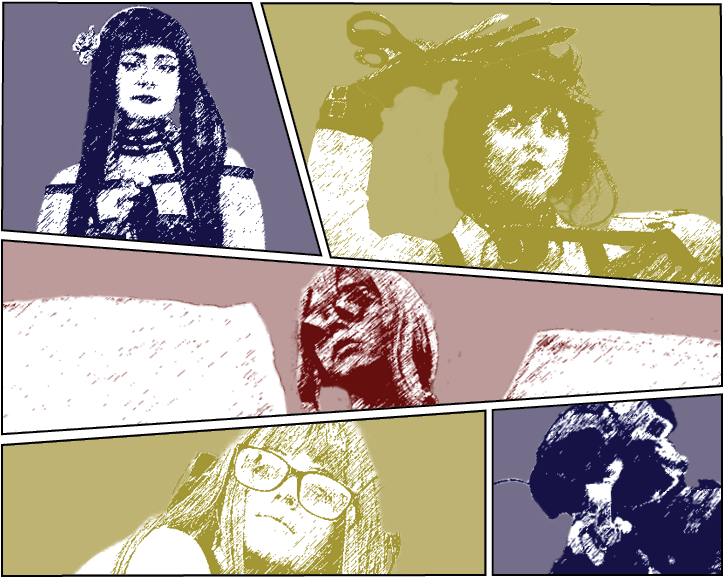
Putting an outfit together is pretty common. Sometimes, it takes one minute. Other times an hour.
For senior Haylee Citty, crafting the perfect look can take over a month.
“It takes a couple [of] months to create a cosplay, from finding a character and or inspiration to go off of, getting pieces shipped online, going to craft stores to gather materials, hand making parts or a whole outfit and accessories, then finding a time to create content,” Citty said.
For Citty, cosplaying characters from her favorite shows, such as Bungo Stray Dogs and Helluva Boss, has given her a creative outlet, even if it takes weeks to prepare. Cosplay is the practice of dressing up as characters from books, shows, movies, video games or other forms of media. While it may seem similar to dressing up for Halloween, cosplay focuses more on detailed planning for outfits, character selection and content creation, as many cosplayers will film videos or set up photo shoots based on the characters they cosplay.
“Each cosplay is different. Sometimes it takes a day or two, sometimes months. It depends on what work I do on it and how busy I am. Wigs and props take hours to a few days, buying clothes and fabric and sewing are all dependent on the costume,” senior Aslan Schwartzhoff, who enjoys cosplaying characters in groups, said.
Citty has been involved with the cosplay community since 2022, while Schwartzhoff started in 2021. Both were introduced to cosplay through fandom groups on social media, specifically the apps TikTok and Instagram, where users can create and post video content. Despite being introduced to cosplay online, the community has a very present—and large—following. Attending conventions such as Megacon, Metrocon, Central Florida Comic Con, Brick City or Orlando Anime Day allows cosplayers to show off their hard-planned outfits, mingle with fans of different shows or games and collaborate with other creators.
Conventions can also be a welcoming space for new members of the community, according to senior Max Bray.
“I was introduced [to cosplay] by a few friends who wanted to take me to a cosplay convention…it was amazing,” Bray said. “Positivity is something that is a struggle everywhere today, and I think for the most part, at conventions, there is a lot of that. It is a chance to feel special and appreciated, [you can] have fun exploring your hobbies in new ways and bringing characters you love to life.”
Collaborating with other cosplayers plays a large part in the open and accepting nature of the community. These collabs may involve large groups dressing up as different characters from a series and recreating scenes between the characters, or dressing up as the same character to represent different variations of them. Content creation also allows cosplayers to bond over shared interests and collaborate within fandoms.
For Citty, cosplay collaborations allow her to work not only on her own cosplays but her passion for photography as well. Working as a freelance photographer at Cons, Citty has made a business out of her interests, which she will pursue at the Savannah College of Art and Design as a Photography major.
“Photography is a huge part of cosplay. It is the main source of making yourself seen,” Citty said. “From self-shoots at home to professional shoots at cons, it is a fun experience to really capture your characters and bring them to life.”
And to bring these characters to life takes not only a lot of time, but lots of money. From the students interviewed, cosplaying a character can range from $50 to upwards of $250. Costs for cosplay can include wigs, materials to sew clothing or create props, accessories or even pre-made cosplays.
When it comes to detail, senior Paige Carruthers’ cosplays excel to another level. Carruthers has made four full cosplays on her own, crafting everything from wigs to scissor hands, which took almost two months to craft for her Edward Scissorhands cosplay. The costumes must be as accurate as possible, but after five years of being involved in cosplay, Carruthers has seen how her creations have improved.
“My first cosplay was Bennett from Genshin Impact since I liked his character design. Looking back, I like to see the progress I’ve made because it was a handmade cosplay,” Carruthers said. “I have definitely improved on wig styling and camera presence since then.”
With progress comes change, and changing up a character’s look—or her own— is no foreign idea for Carruthers.
“I tend to enjoy cosplaying characters that have more non-human elements to see how I can recreate those. I like experimenting in different makeup and SFX to see what I can do to improve the quality of the cosplay,” Carruthers said.
Creativity and community are the building blocks of cosplay. Many students may have warped or distorted perspectives on the practice, with social media opening creators up to bullying or harassment. Often being compared to furries are other non-conforming practices, cosplay has been plagued with a reputation formed by misinformation. According to senior Ares Smith, cosplay is a judgment-free zone where fans can express their creativity and interests.
“It is a way for me to express myself with the things I love and has helped me meet a lot of my friends and connect with them,” Smith said. “This hobby has definitely helped me find a community of people who enjoy the same things I do and express love for different forms of media.”
Choosing a character to cosplay may cost time—and money—but according to Carruthers, the camaraderie and expressiveness are worth every penny.
“Cosplay opens me to a world of creativity. I can play around with how a character looks or give it a whole different design,” Carruthers said. “This hobby has given me some of my closest friends, and the community is very supportive.”
Your donation will support the student journalists of Hagerty High School. We are an ad-free publication, and your contribution helps us publish six issues of the BluePrint and cover our annual website hosting costs. Thank you so much!





